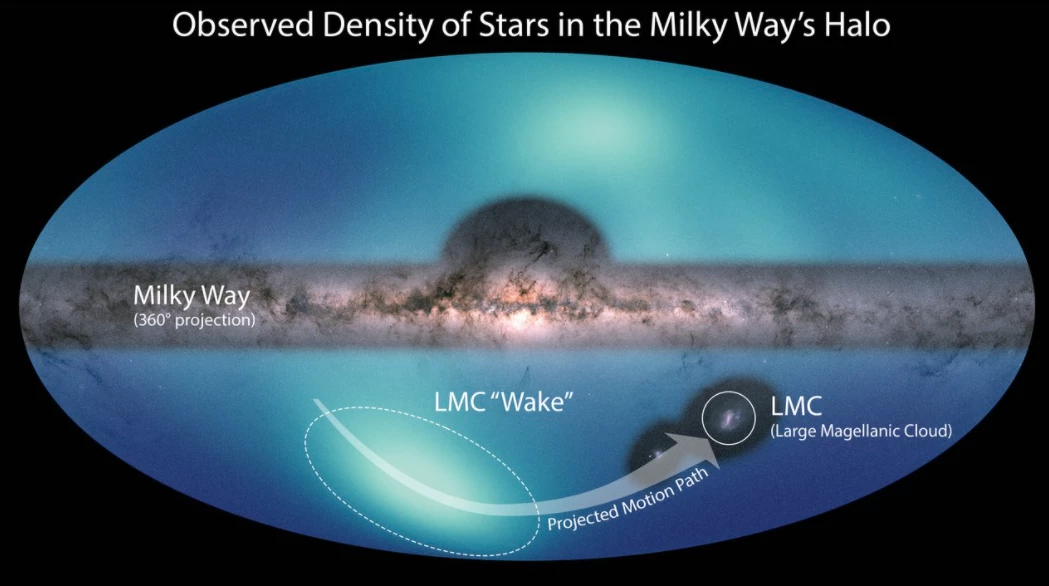A team has made a few intriguing discoveries in the outermost regions of the Milky Way. The astronomers mapped the fringes of the sparse halo that envelops our home galaxy, and found the wake of a dwarf galaxy pushing through it on its eventual collision course with the Milky Way.
When picturing the Milky Way, most people think of the spiral disc of stars, but our galaxy extends much further than that. That disc lies at the center of a gigantic spherical halo of hot gas, stretching hundreds of thousands of light-years in all directions. While it still contains a huge number of stars, they’re spread out much more thinly than in the disc.
In the new study, astronomers mapped the extreme fringes of this halo for the first time, focusing on distances between 200,000 and 325,000 light-years from the center of the galaxy. The team used data gathered by Gaia, WISE and NEOWISE between 2009 and 2018, detailing the positions of over 1,300 Cepheid stars. These objects have predictable light signatures that can be used to accurately determine their distance.
Analyzing the distribution of these distant stars gave the team some intriguing insights. The Large Magellanic Cloud (LMC), a dwarf galaxy that orbits the Milky Way, appears to have disturbed some of the stars in the outer halo, leaving what looks like a wake behind it. It was predicted to exist, but the new study marks the first direct detection of this wake.

The team says that the shape of the wake also confirms a suspicion held by other scientists: that the Large Magellanic Cloud is still only on its first orbit of the Milky Way, a journey that’s taken around 13 billion years. That’s close to the entire age of the universe.
Its next orbit won’t take quite so long however – interactions with the Milky Way have changed its path. In fact, the new study also confirms another prediction made by other astronomers: the LMC will probably collide with our galaxy in about two billion years’ time. The team says that the main driver of this collision is the enigmatic dark matter, the gravity of which is dragging on the smaller galaxy and slowing it down.
“This robbing of a smaller galaxy’s energy is not only why the LMC is merging with the Milky Way, but also why all galaxy mergers happen,” says Rohan Naidu, co-author of the study. “The wake in our map is a really neat confirmation that our basic picture for how galaxies merge is on point!”
While we still don’t understand what exactly dark matter is, the discovery of the LMC’s wake could provide new hints. The astronomers say that applying different models to the shape of the wake could reveal new properties about the particles that may (or may not) make up the strange substance.
“You can imagine that the wake behind a boat will be different if the boat is sailing through water or through honey,” says Charlie Conroy, co-author of the study. “In this case, the properties of the wake are determined by which dark matter theory we apply.”
The research was published in the journal Nature. The team’s simulations of the distribution of dark matter in the galactic halo can be seen in the video below.
Source: NASA JPL




